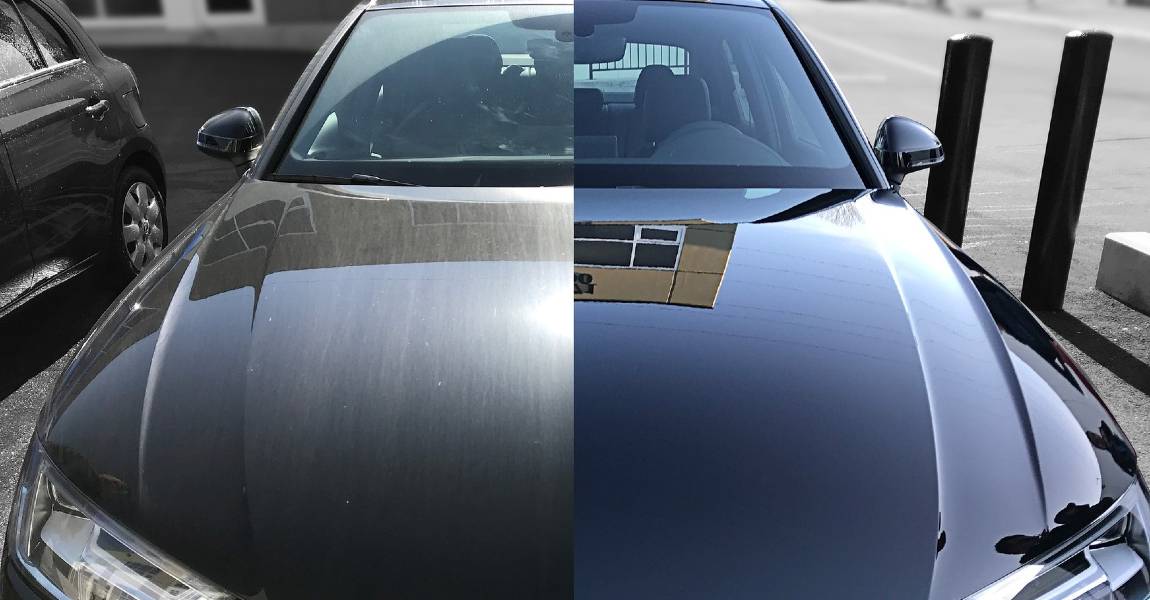Experience high-end car detailing to preserve your vehicle’s interior and exterior.
Experience high-end car detailing to preserve your vehicle’s interior and exterior.
Blog Article
A Comprehensive Guide to the Kinds Of Ceramic Layer on the marketplace
Ceramic finishes have actually emerged as a critical service across various sectors due to their unique residential properties and applications. As we check out the distinct features and applications of these coverings, the ramifications for performance and long life come to be progressively noticeable, raising concerns concerning which type might ideal match your demands.
Comprehending Ceramic Coatings
Ceramic finishes are sophisticated safety options that have actually acquired popularity in numerous markets, especially in automobile and aerospace applications. These finishings include a liquid polymer that, when cured, creates a resilient, hydrophobic layer on the surface area of the substratum. This layer supplies enhanced resistance to ecological pollutants, UV radiation, and chemical exposure, therefore extending the life and aesthetic allure of the underlying product.
The basic component of ceramic finishings is silica, which contributes to their solidity and longevity. The application process typically entails surface area preparation, application of the finish, and healing, which can be accomplished via warmth or UV light. When healed, ceramic finishes show exceptional bonding residential or commercial properties, allowing them to stick strongly to a selection of surfaces, consisting of metals, plastics, and glass.
Along with their protective features, ceramic layers likewise supply ease of upkeep. Their hydrophobic nature reduces the adherence of dirt and crud, making cleansing easier and less constant. Generally, the adoption of ceramic coatings stands for a considerable advancement in surface area security technology, offering both useful and aesthetic benefits across numerous markets.
Types of Ceramic Coatings
Different sorts of ceramic coatings are readily available, each made to satisfy specific performance requirements and applications - scratch repair sarasota. One of the most usual kinds consist of:
Silica-based Coatings: These coatings mainly include silicon dioxide and are recognized for their longevity and chemical resistance. They are extensively made use of in automobile and industrial applications.
Titanium Dioxide Coatings: Prominent for their photocatalytic buildings, titanium dioxide layers are frequently used in settings where self-cleaning and antifungal buildings are desirable, such as in structure materials and automotive coatings.
Zirconia Coatings: Defined by their high-temperature stability and thermal resistance, zirconia coverings are utilized in applications such as generator engines and high-performance automotive parts.
Alumina Coatings: Exhibiting exceptional hardness and thermal security, alumina coverings are regularly utilized in wear-resistant applications, including reducing tools and commercial machinery. - Car Detailing
Crossbreed Coatings: Combining the properties of numerous products, hybrid layers offer boosted efficiency features, making them appropriate for distinct and demanding applications.
Each sort of ceramic finish serves distinctive purposes, permitting users to choose one of the most proper solution based upon specific environmental conditions and efficiency demands.
Advantages of Ceramic Coatings
Ceramic coatings, in particular, deal various benefits that make them significantly popular among suppliers and customers alike. These coatings are resistant to scratches, chemicals, and UV rays, making certain that the underlying surface continues to be safeguarded over time.
Along with toughness, ceramic layers supply outstanding hydrophobic residential properties, see permitting for easy cleaning and try this web-site maintenance. This water-repellent nature lessens the adherence of dust, grime, and other contaminants, which can extend the visual appeal and capability of the surface. Ceramic coatings can substantially enhance thermal resistance, making them ideal for applications that sustain high temperatures.

Application Refine
When using ceramic coverings, a precise approach is important to attain optimum results. The application process normally begins with comprehensive surface prep work. This includes washing, decontaminating, and brightening the surface to get rid of all pollutants, including dirt, oil, and prior waxes or sealants. A clean surface ensures correct attachment of the coating.
When the surface area is prepped, the following action is to apply the ceramic covering. This can be done using an applicator pad or a microfiber cloth, making sure even protection. It is vital to operate in little areas to maintain control and prevent early curing. The coating must be used in slim layers, as thicker applications can result in irregular finishes.
After application, the layer requires a particular curing time, typically varying from a couple of hours to a complete day, depending on the item. Throughout this time, it is important to avoid exposure to moisture or pollutants. Finally, a gentle buffing may be my explanation needed after healing to enhance the gloss and get rid of any high spots. Following these steps diligently will take full advantage of the performance and longevity of the ceramic finish, providing a sturdy protective layer for the surface.
Upkeep and Long Life
To ensure the durability and efficiency of a ceramic covering, normal upkeep is necessary. Ceramic finishes, known for their resilience and protective qualities, need specific treatment regimens to maximize their life-span and efficiency.
Along with normal cleaning, periodic assessments are essential. Look for signs of wear or damages, such as hydrophobic residential or commercial properties diminishing or surface area imperfections. If needed, a light polish might be put on renew the finish without stripping it away.
Furthermore, the application of a booster spray can improve the finishing's hydrophobic effects and recover its gloss. This is especially useful for coatings that have actually remained in use for a prolonged period. Eventually, by adhering to these maintenance practices, one can considerably prolong the life of a ceramic coating, ensuring that it proceeds to supply optimum security versus ecological factors and maintain the aesthetic charm of the lorry.
Conclusion

Report this page